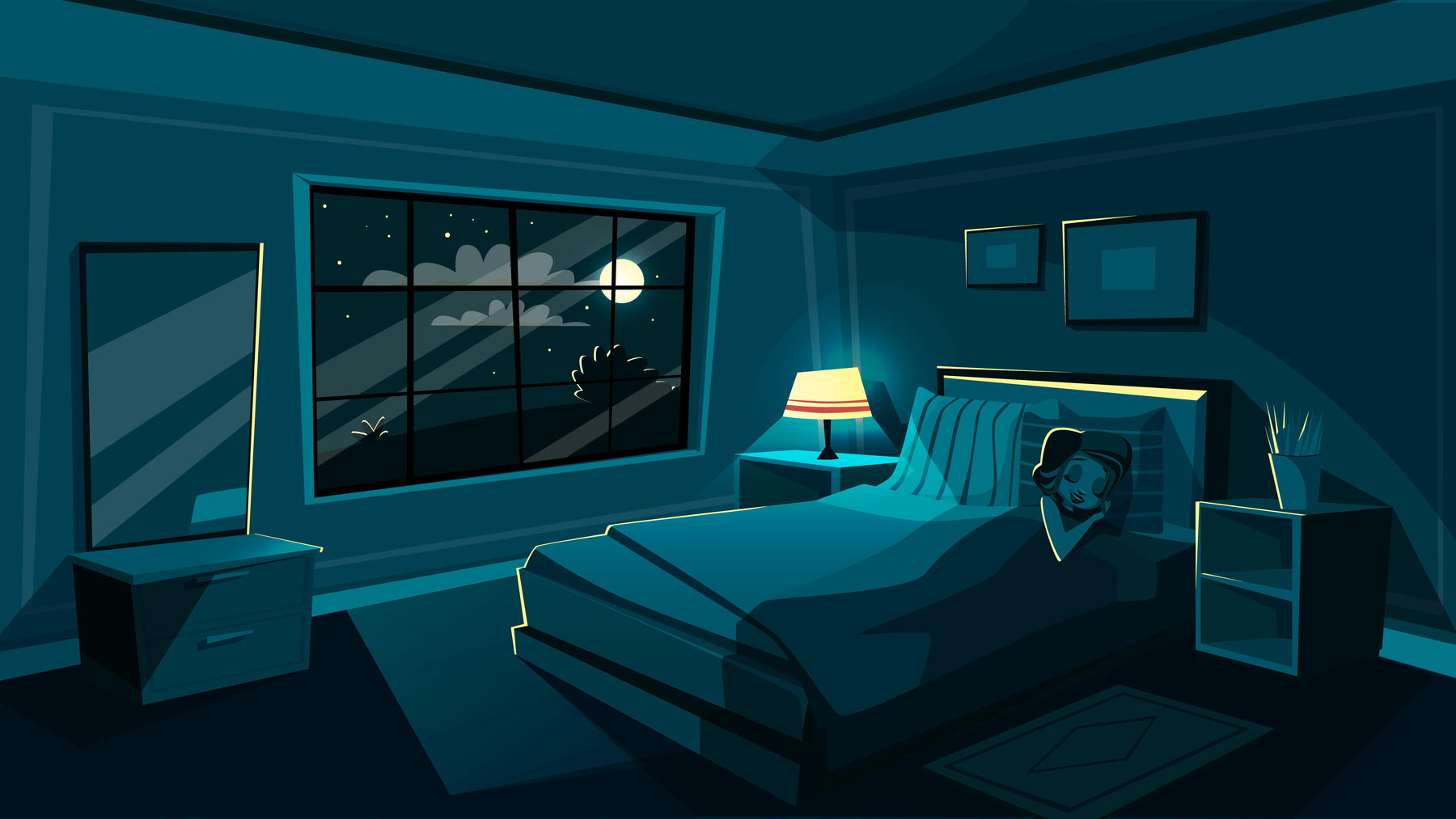
Bedroom Lighting Tips for Efficient Rest
Bedroom lighting is more critical than many people imagine. While getting lighting right matters in every room, it is particularly important in the bedroom because of how it affects your sleep. Getting it wrong can lead to all sorts of problems and issues, leaving you feeling groggy in the mornings.
The challenge, of course, is creating a lighting setup that meets both your interior design and wellness requirements. You want something that makes you feel good while also giving you the aesthetics you love.
That’s where this guide can help. We explore how to manage the lighting in your bedroom to maximize restfulness and relaxation while taking your interior décor needs into account.
Start By Layering
The first task when implementing lighting in the bedroom is to layer it. You need various levels of lighting for different situations.
Most experts recommend three sources of illumination in the bedroom depending on the task. This layering makes the room more flexible and conducive to more activities.
Interior designers usually start with task lighting. These lightings provide illumination where things happen in the room. For example, most bedrooms have lamps on the bedside table for reading, or overhead lighting for the same purpose. These lights are wonderful on dark evenings when you want to fall into a deep sleep while reading a book.
You can also use task lighting if you want to dedicate a nook for reading away from the bed. Standing floor lamps are the best choice in this situation.
Decorative lighting is also worth considering. These lights enable you to fulfill your interior design ambitions and get the look you want. For example, you might add fairy lights around the bedhead, or add a chandelier to the ceiling socket. The purpose of these lights is to transform your bedroom’s atmosphere and turn it into a place where you want to get additional sleep and rest.
Decorative lighting is a great way to get more bang for your buck, since much of it is inexpensive to install these days. Fairly LED lights are extremely affordable but can have a profound effect on how your room feels.
Lastly, experts recommend considering ambient lighting as part of your layering system. This lighting sets the general tone of the room, and is what turns on when you flip the main switch.
Many people opt for spotlights in the bedroom, but these can be overpowering, especially in the evening. That’s why most designers prefer sconces, since these illuminate more evenly without feeling harsh.
Ambient lighting should run along the perimeter of the bedroom only, according to design experts. If it is too central, it no longer qualifies as “ambient.”
Ultimately, you need to carefully consider the light levels in your bedroom. Too much light, including artificial versions, can disrupt sleep patterns by interfering with your circadian rhythm. This can make sleep less restorative, leading to reduced alertness during the day, less recovery, insulin resistance and, sometimes, heart problems.
If the lights in your bedroom are too bright, for example, you could reduce your sleep quality. It may be more challenging for your brain to enter deep or REM sleep, which are the most restorative and critical phases. You may also have trouble falling asleep in the first place if bright lights wake you up and trick your body into thinking it’s morning.
Over time, sleep issues can lead to several health problems. You may find it challenging waking up or experience eye strain due to the blue light output of many modern LEDs. You could also find that your insulin resistance worsens because you’re unable to give your body the time it needs to rest, recover, deal with issues, and manage cellular processes.
As a rule, therefore, your bedroom lighting should give you the option of dimming it where possible. It should also emit warmer, evening colors on the yellow and orange end of the spectrum. Avoid any lights that emit in the blue wavelengths since these can prevent you from getting into a more restful state.
Use Lamps To Direct Light
Next, think about how you can use lamps to direct light around your bedroom. Sometimes, you’ll need a bright, focused beam, especially if you read books.
Lamps are part and parcel of layering the light in your bedroom and you can put them on bedside tables, dressers, and other surfaces where you think they might make a difference. The nice thing about lamps is that switching them on is optional. If you don’t want the extra brightness in your home, you can ignore them.
According to designers, lamps are ideal for bedrooms because they pull light into neglected spaces. Dark corners quickly disappear when the right lighting is being used.
Check Bulb Warmth
Another tip is to ensure that you have the right bulb warmth for your lighting in the bedroom. Most experts put this around 2700K to 3000K, which is a rating you can find on the packet of any bulb you buy. You don’t want to go much above this range, as the light emitted will be too white, and will feel harsh. This temperature is ideal for people who want bedside lamps for reading or subtle accents on the wall. Interestingly, bulbs in this range also produce the most attractive light for most people’s tastes because their emissions are yellower and mellower.
At the other end of the spectrum, are blue light bulbs in the 4000K to 5000K range. If you already have these installed, you might want to consider applying blue light blocking filters (usually inexpensive) to adjust the color temperature to something more conducive to rest. Bulbs producing white or blue light can disrupt your sleep pattern and you may not be able to go back to sleep again if you switch them on in the night.
Install Dimmer Switches
Dimmer switches are another popular bedroom option. These are essentially adjustable resistors that change the current going to the bulb, making it shine brighter or dimmer, depending on the setting you choose.
Dimmer switches are ideal in the bedroom for wellness and aesthetic reasons. For one, they prevent you from having to expose your eyes to the full brightness of your bulbs, just to find your way to the bathroom during the night. But more than that, they also give your bedroom a chilled, relaxing vibe that makes you want to spend more time in it. You can adjust the brightness downwards to whatever you want, making the room look and feel cozier.
Get The Scaling Right
You also want to think about the scaling of your lighting in the bedroom and if it makes sense for the room as a whole. Even if you love a lighting fitting and feel like it would go with the rest of your theme, it might be the wrong size.
For example, for bedside lighting, keep the scale between a third and two thirds of the width of the night stand. If you try to go beyond that, it will start to look awkward.
Similar scaling rules apply to overhead lighting. Simply going for the largest fitting you can afford isn’t always the best option.
Most experts say that light fittings should be around a quarter to a half of the diameter of the bed. If you go beyond that, the light can start to feel too big for the room.
Ambient options like sconces don’t require the same level of careful planning, since they are largely out of the way anyway. Three or four installations are usually enough for one bedroom. More than that creates clutter.
Lastly, for this section, you should think about the number of bulbs you want to use. The figure you choose will depend on the size of the room and the amount of brightness you need. Two or three bulbs are okay for a smaller room, while up to twenty could be what you need for a larger space.
Add Nightlights
If you’re really interested in biohacking and ensuring that you sleep well, you could use amber or red nightlights. These emit wavelengths that won’t stimulate wakefulness hormones in your body and will avoid harming your sleep.
Night lights are easy to add because they simply plug into the wall. You can buy them for a few dollars from more homeware and electronics stores, making them an inexpensive addition you could play with.
Use Smart Lighting To Complement Your Routines
Finally, you might want to try experimenting with smart lighting for your routines. These bulbs connect to apps and can change color and brightness throughout the day, depending on what you want them to do.
Smart lighting is a little costlier than conventional lighting, but also completely worth it. You can adjust these lights to your circadian rhythm so you always complement your body.
Now You Understand How To Illuminate Your Bedroom
Reading this guide, you should now have a better idea for how to illuminate your bedroom to complement your décor while also taking care of your health. Dimmer switches, smart lighting, and layering can all help achieve a beautiful, functional space.
